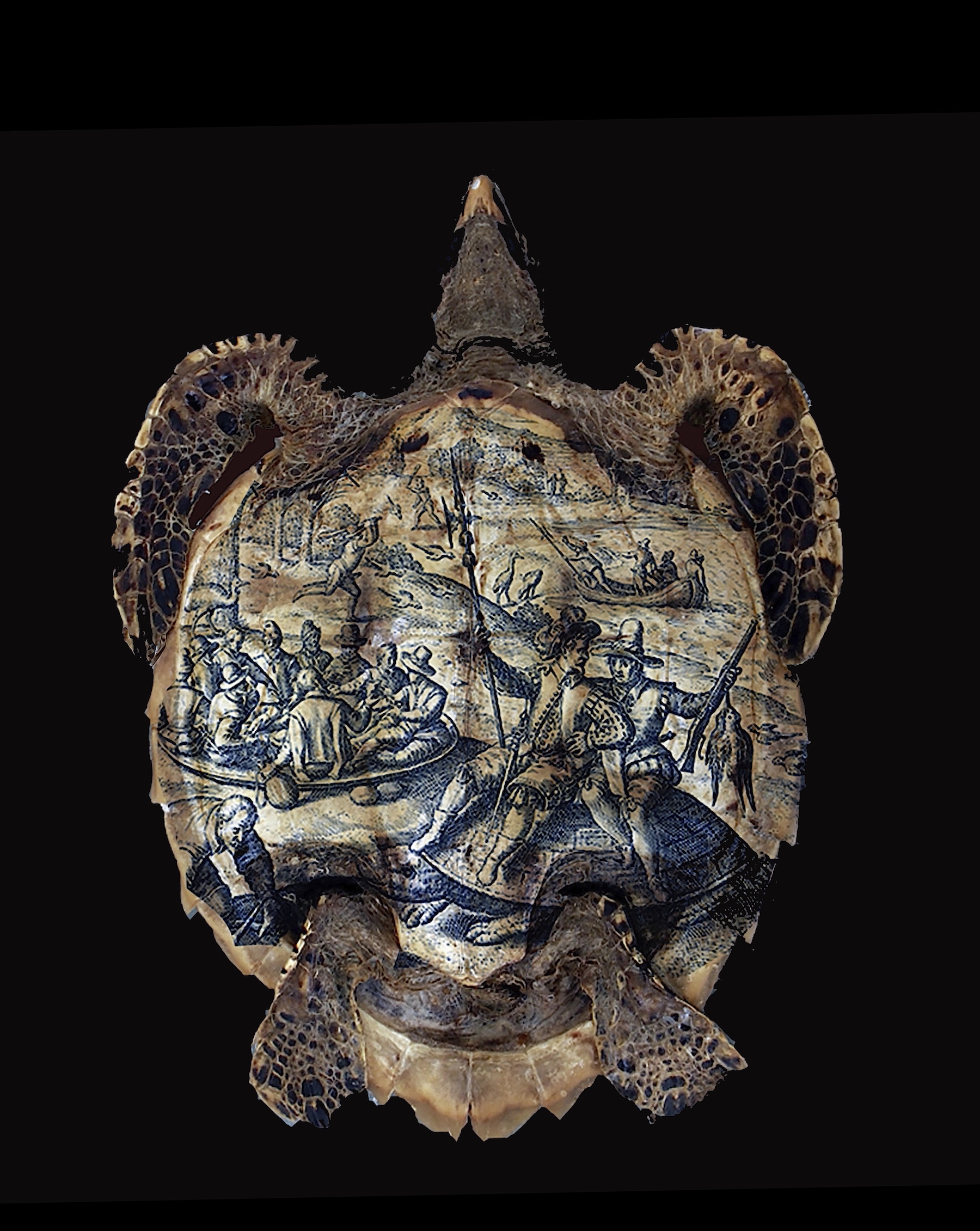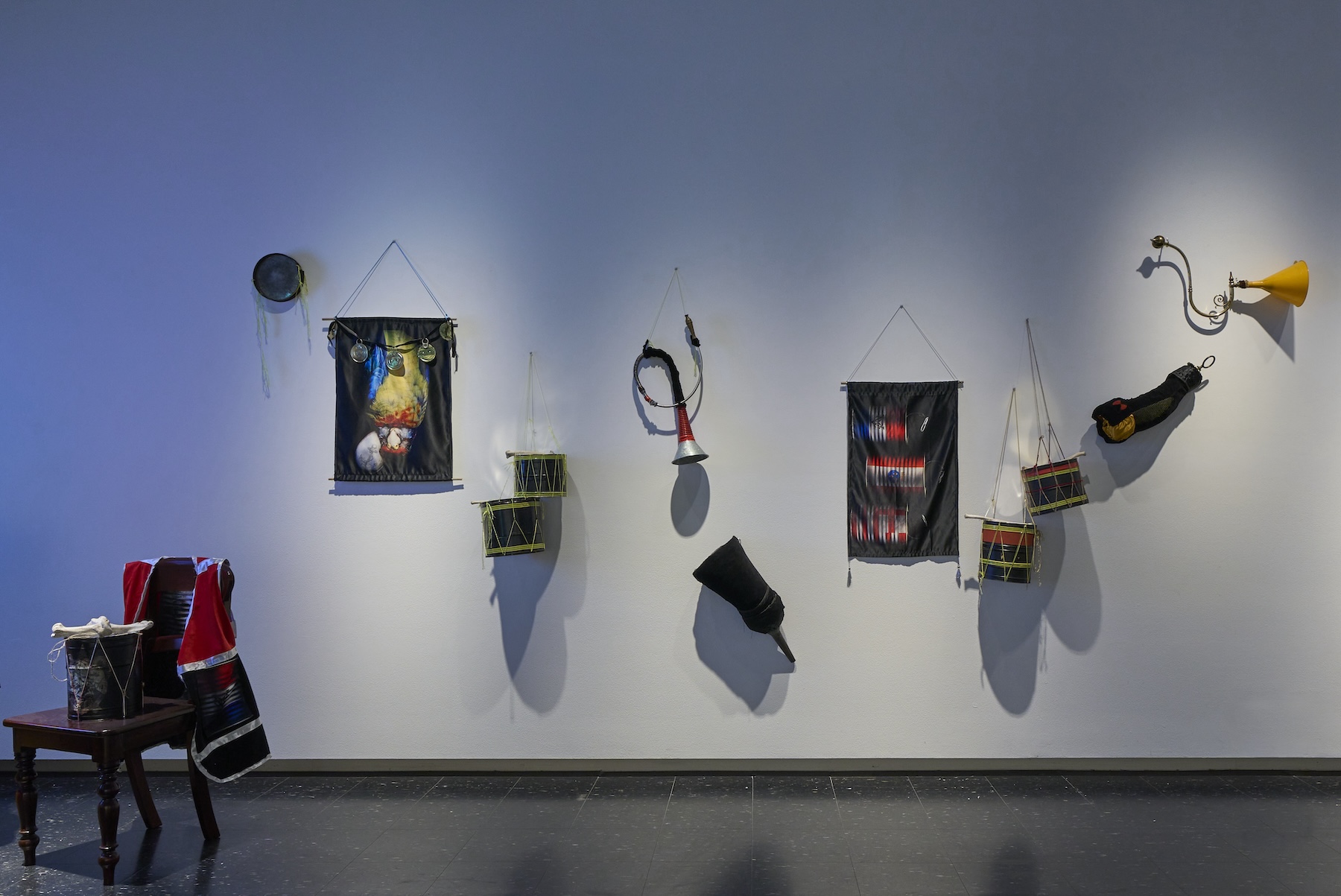‘Darkly gothic aura’: Sue Kneebone’s cabinet of post-colonial curiosities
In her exhibition The Last Tide Waiter, SALA feature artist Sue Kneebone assembles a procession of flotsam and jetsam that explores the destructive legacies of Empire – and her own family history.

Since moving to Adelaide in 2007 to undertake an art practice-based PhD at the University of South Australia, Kneebone has developed an evolving body of work employing bricolage and assemblage as vehicles for her post-colonial perspective. This involves deconstructing all manner of scavenged materials to create new hybrid assemblages that often juxtapose man-made and natural relics to startling surreal effect. Her art gains its power both from its sheer imaginative flair, and from her ability to imbue these assemblages with a sense of the uncanny, summoning allusions that draw on memory, myth and recorded history.
The Last Tide Waiter is the latest manifestation of the artist’s long-running creative investigation into the dark legacy of colonialism and her family’s small part in this far larger history. In her installation for Adelaide Central Gallery she sets out to create a poetic evocation of the world of her great-great grandfather, Christopher Kneebone, who in the 1870s was a servant of empire as a tide-master on the colonial British outpost of Mauritius. In this role he performed duties as a customs officer in respect to the naval trade in goods and human cargos. Kneebone extrapolates from her personal family story to the wider implications of the ruinous impact of Empire and specifically the role of navigation in promulgating economic and ecological exploitation.

Kneebone’s installation of objects, video and sound responds to the modest dimensions of the windowless gallery space by generating a disquieting sense of enclosure within a world which is a figment of the artist’s imagination and yet rich with allusions rooted in history. Entering the exhibition is to cross a threshold from the humdrum world of the everyday and become immersed in a melancholy cabinet of curiosities where the familiar becomes strange. Intriguing objects surround us, each fashioned with intricate detail to entrance the gaze and invite close examination; and yet this accumulation of curiosities is pervaded by a darkly gothic aura of ruination. A ship’s rope ladder has rungs made of animal bones. A cutlery canteen lined with plush red velvet contains hand-wrought silver ‘cutlery’ with prongs and blades which morph into crustacean claws, talons and teeth. A cacophony of drums and cymbals from the soundtrack compounds the sense of visual discombobulation.
Gradually it becomes apparent that there is a coherent plan in this seeming chaotic collection, with each object redolent with empirical and nautical associations. The walls are hung with a continuous installation, Procession, a virtual procession of hybrid assemblages, fabricated through a bricolage process from skulls, bones, textiles, scavenged junk and all manner of flotsam and jetsam, to evoke relics of military and naval regalia. There are tin drums which have bones for drumsticks, and artificial strap-on legs sprouting peculiar fittings including a feral boar tusk and a table leg. These are interspersed with various bugles and horns assembled from hybrid fossicked components, and in turn mock-military standards and drums emblazoned with photo-montages of endangered species. Weighing scales in the shape of a pair of turtle shells covered in pale green brocade measure economic versus ecological value in a poetic allusion to the endangered green sea turtle.
The room is dominated by an installation on the south wall centred around The tide waiter’s bureau, an old desk cluttered with all manner of natural paraphernalia. A map of tides is spread out, weighed down by cast silver shells, while battered glass bottles lined across the desk seem to contain skeletal images of lost species. On either side of the desk Kneebone’s underwater videos of fish swimming through sea grass and coral reefs suggest what is a stake ecologically. Overhead, a video of the changing phase of the moon presides as a signifier of the role of the tides and shipping movements in the exploitation perpetuated by colonial empires.

Subscribe for updates
Several of the most powerful pieces in The Last Tide Waiter have been previously exhibited either in Adelaide or Tasmania, notably the cutlery canteen, Out of flavour, 2023, a suspended lantern containing a parrot skeleton, Intertidal waiting, 2022, and the ominous bone ladder, Ladder for lost souls, 2013. While all the individual pieces in her new work, Procession, contribute to a cohesive overall impact, some lack sufficient raison d’etre in themselves. To my mind the most impressive individual piece is All amok, a complex mixed media embroidered banner suspended from a fabulously ornate metal assemblage, and bearing a photomontage of a turtle whose shell is decorated with a 19th century engraving of colonial men riding on the back of a giant turtle. This piece encapsulates Kneebone’s thematic concerns through a resolved work rich in poetic allusion.
For The Last Tide Waiter there is both a free room sheet with an introductory essay by ACSA graduate Amanda Seacombe, and the excellent SALA monograph book, Sue Kneebone: Unnatural Causes, just released by Wakefield Press. This is available for purchase at the exhibition. With illuminating essays by Elle Freak, Andrew Purvis and James Tylor, and an interview with the artist by Nicole Clift, the monograph is essential reading for those who respond to the wonder and intrigue generated by Kneebone’s art.
Much as I admire Kneebone’s art, it is a niggling concern for me that, as is frequently the case with contemporary art and especially with post-colonial art, the accompanying texts and wall labels can be indispensable in revealing the artist’s intentions and back story. It is a tribute to her exceptional talent and to the coherency of her vision that Kneebone has the rare power to stimulate the viewer’s imaginative engagement and provoke curiosity to delve deeper.
The Last Tide Waiter continues at Adelaide Central Gallery until September 5

